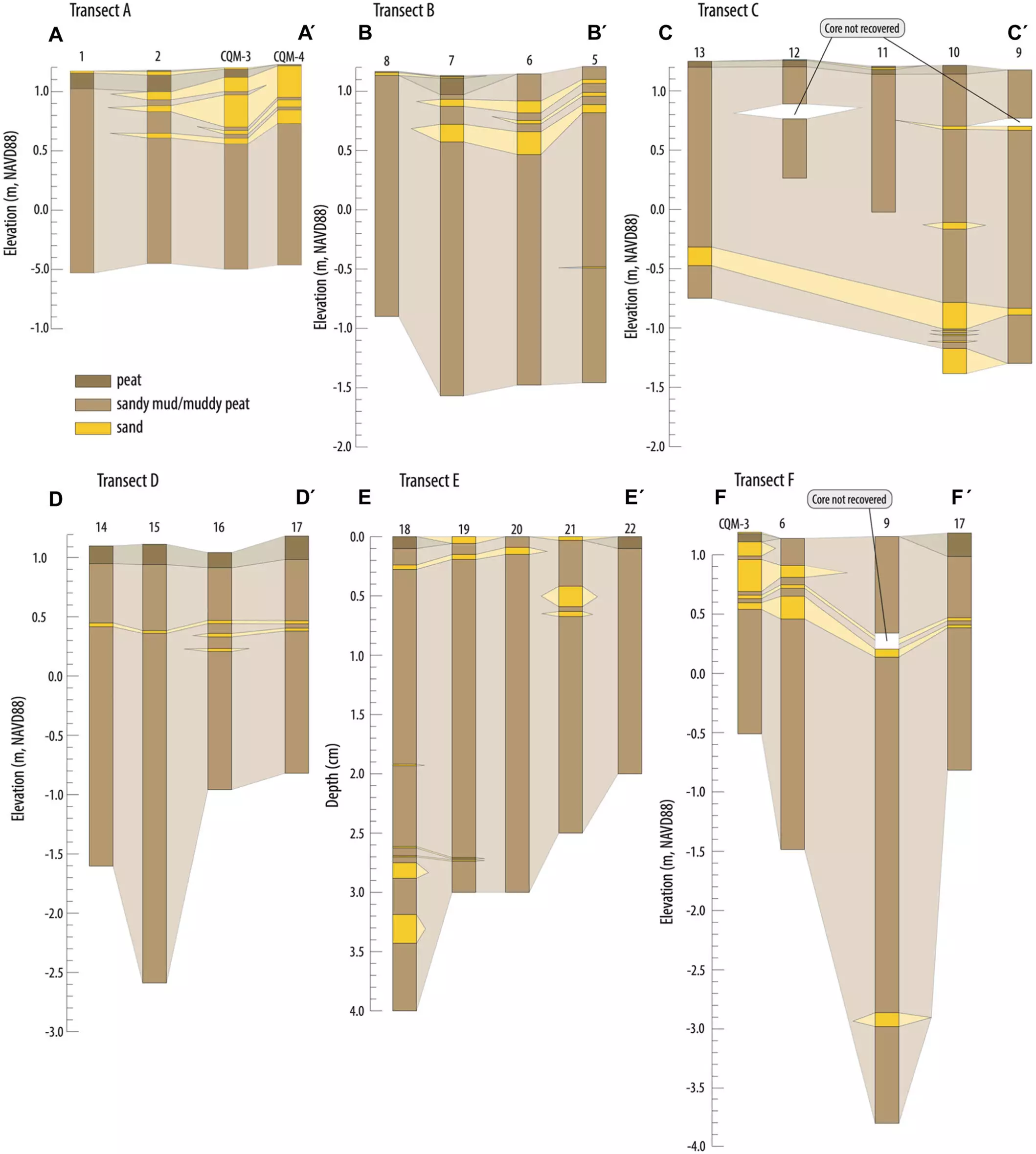In a groundbreaking study led by Rutgers University-New Brunswick, researchers have unlocked the veil of time to reveal information about hurricanes that have impacted coastal regions over the past 400 years. Using advanced sediment analysis, the team found compelling evidence of historical storms beneath the wetlands of New Jersey’s Cheesequake State Park. This innovative technique not only offers a new lens through which to understand past hurricane activity but also serves as a vital tool for assessing the implications of climate change on storm frequency.
The research, recently published in the Journal of Quaternary Science, has shed light on storm deposits that predate modern instrumental records, thereby extending our understanding of storm patterns significantly further back than previously possible. The lead researcher, Kristen Joyse, embarked on this journey from 2019 to 2021 while pursuing her doctorate in Earth and Planetary Sciences. “By analyzing sediment layers, we have harnessed a geological record that unveils historical storms long before human instrumentation,” she explains, highlighting the significance and future implications of this methodology.
A New Approach to Understanding Extreme Weather
Researchers studying meteorological phenomena traditionally depended on tidal gauges and historical documents to map storm patterns. Tidal gauges provide high-frequency data on water levels, while historical records like newspapers and shipping logs contribute additional context. However, they lack the depth required to explore extensive historical storm data. With sediment core analysis, scientists can delve deeper, revealing insights that can forecast how climate change may affect future storm activity.
“Overwash deposits,” which are layers of sand transported inland during hurricanes, are now recognized as significant indicators of past storms. These sedimentary layers offer tangible evidence of extreme weather events that shaped the coastal landscape. The research team meticulously gathered sediment cores from various depths and examined them using fossil analysis, organic content evaluation, and carbon dating. These methods, when combined, help distinguish storm-related deposits from the more mundane background sediments typically found in wetland environments.
Connecting Ancient Evidence with Modern Events
The Rutgers team wasn’t simply cataloging ancient history; they were drawing lines between past and present storms, including critically significant occurrences like Hurricane Sandy in 2012. Among the eight distinct storm deposit records unearthed, several align with known hurricane activity, which not only establishes a timeline but also validates the preservation potential of these geological markers. In an interesting twist, they discovered storm events dating back to 1584—far removed from any existing records. This startling revelation compels a reevaluation of our understanding of hurricanes and their historical patterns.
While the sediment cores successfully identified storms from before instrumental records were established, they also revealed limitations. There were more extreme events recorded by tidal gauges that were not captured in the sediment analysis. “These findings emphasize the potential of sediment records for understanding storm pasts, while also highlighting that they do not encompass the full spectrum of extreme storm events,” highlights Robert Kopp, a co-author of the study. This revelation opens the door to further research inquiries: why are some storms preserved while others slip through the geological cracks?
Implications for Future Climate Models
The implications of this research extend beyond understanding historical weather patterns. The findings empower scientists to formulate hypotheses regarding how ongoing changes in climate could alter storm frequency and intensity. Joyse articulates this necessity: “This research is not just about what has happened; it’s about predicting future storm trajectories under changing climatic conditions.”
By harnessing this geological framework, scientists can construct more informed models to anticipate the potential impact of climate variables on hurricane frequency. As researchers confront questions surrounding storm preservation, they can better forecast how rising sea levels, increased temperatures, and other climate influences may interact with historical storm records.
Broader Collaborations in Geological Research
The multidisciplinary nature of this research shines through as it includes collaboration with several institutions and experts. This cooperative approach enriches the study, drawing from diverse scientific perspectives and methodologies. By uniting coastal sedimentologists, climate scientists, and geologists, the team creates a robust foundation for future explorations into storm patterns.
As researchers continue to build upon the findings of this Rutgers-led study, they lay the groundwork for a comprehensive understanding of how storm patterns evolve over time. The historical sediment record is not merely a tale of the past; it is a crucial narrative that informs the future. As climate considerations become more pressing, this innovative research could play a vital role in shaping our approach to disaster preparedness and coastal community resilience.

